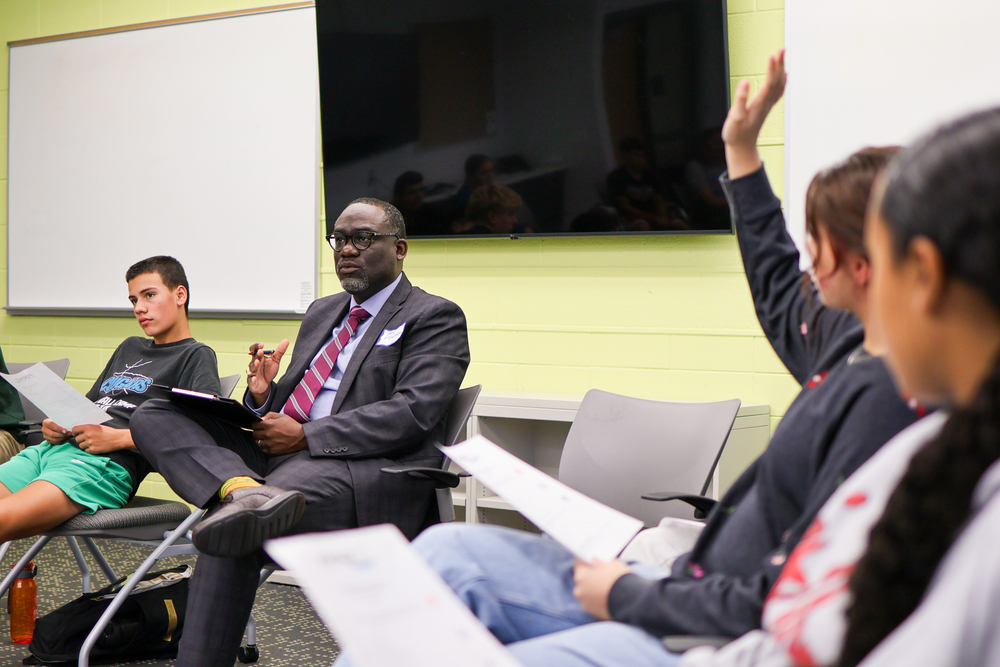A group of student advisors who have the ear of the District’s superintendent are a key point of connection between the student body and the decision maker at the top.
“It’s critical for me as superintendent, especially as a new superintendent, to have a connection to students,” Superintendent Johnny Edwards said. “Students have a voice – they have a lot of great ideas and opinions, and it’s a great way to hear from them directly on how they view us as a school district.”
The Superintendent’s Student Advisory Board, which began under former superintendent Mark Bielang, is a key connecting point between the administration office and the District’s most important group of stakeholders.
The advisory board, which meets monthly during the school year, is a two-way conversation between Edwards and the 25 students representing all three high schools in Portage. The superintendent can share information on District decisions and the students can give insight into how students feel about certain issues.
“I’m going to learn a lot,” Edwards said of his time spent hearing directly from students.
Students first apply as they enter high school and are asked to remain on the board through graduation. In his first year as superintendent, Edwards chose six new freshmen to add to the group from an applicant pool of 12 students.
After the group’s first meeting of the year, Edwards said he’s already envisioning ways to make the group accessible to more students.
Edwards began his first meeting with his group of student advisors by first learning their names, speaking about the importance of a strong working relationship between the students and the superintendent’s office. Next, he answered their questions about the impact of Lansing’s budget troubles on the District’s finances and shared information about the upcoming 2025 Bond election.
Next, it was the students’ turn to lead the conversation. Edwards asked students for their honest feedback on his efforts to reach their peers in his series of Listen & Learn sessions aimed at gathering feedback from different populations in the District.
“They had some really good perspectives on how those listening sessions could work inside their schools,” he said.
The meetings are a chance for students to speak directly to their superintendent, share ideas, offer feedback and even shoot down bad ideas that won’t connect with young people.
“My ultimate goal is to learn from them on how they view their experience as a student,” he said. “Do they agree with the adults’ perspectives or perceptions of our school district? What are the areas of our district that they believe can or should be improved, and how can I as superintendent help facilitate that improvement for young people.”
But hearing their feedback is only the first step. Students want to see evidence their voices are being heard. Edwards said he must follow through with those improvements or help educate the students on what factors affect his decision-making such as school finance laws.
Why can’t their lunch be two hours long? How does the Food Service Department determine what to serve every day?
Educating the students helps them better understand how decisions are made.
“Young people want to know the ‘why’ behind the policies and practices that affect them,” he said.

